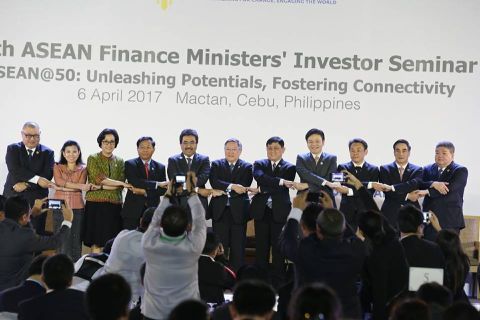LAPU-LAPU CITY, Cebu–The Association of Southeast Asian Nations (ASEAN) is embarking on a new phase in the regional integration as the 10-member bloc is poised to grow faster than advanced economies amid uncertain global economic and political environment.
ASEAN Deputy Secretary General Lim Hong Hin said the region is expected to grow at 4.8 percent this year, above the projected growth rate of advanced economies at 3.4 percent.
“However, such growth projection must be viewed against the backdrop of uncertain times, with the rise of populism and protectionism sentiment posing a challenging context to the region’s integration agenda,” he said during the ASEAN Finance Ministers’ Investor Seminar (AFMIS) in Lapu-Lapu City, Cebu on Thursday.
The AFMIS, held at Shangri-La’s Mactan Resort and Spa, served as the venue for ASEAN-member finance ministers to discuss investment opportunities in the region.
It was also where they discussed the progress of the ASEAN Economic Community (AEC)—which aims to create a single market and production base for the bloc—since it went into full swing two years ago.
Lim said the longer-term outlook remains robust and positive, with the new AEC Blueprint 2025 charting a forward-looking, broader, and more ambitious direction for the region over the next 10 years.
The blueprint, he said, underscores the transformative thrust of global trends and in keeping up, the ASEAN will have to go beyond its existing areas of cooperation to include electronic commerce, global practices, global value chains, financial inclusion, and sustainable development, among others.
As the ASEAN moves away from being a production-driven economy to one that is productivity-driven, Lim said the region will increase its investment in research and development, commercialization of technology, as well as human resource development.
Furthermore, Lim said the bloc will continue to support the development of micro, small, and medium-scale enterprises (MSMEs) as this sector acts as the backbone of the regional economy.
